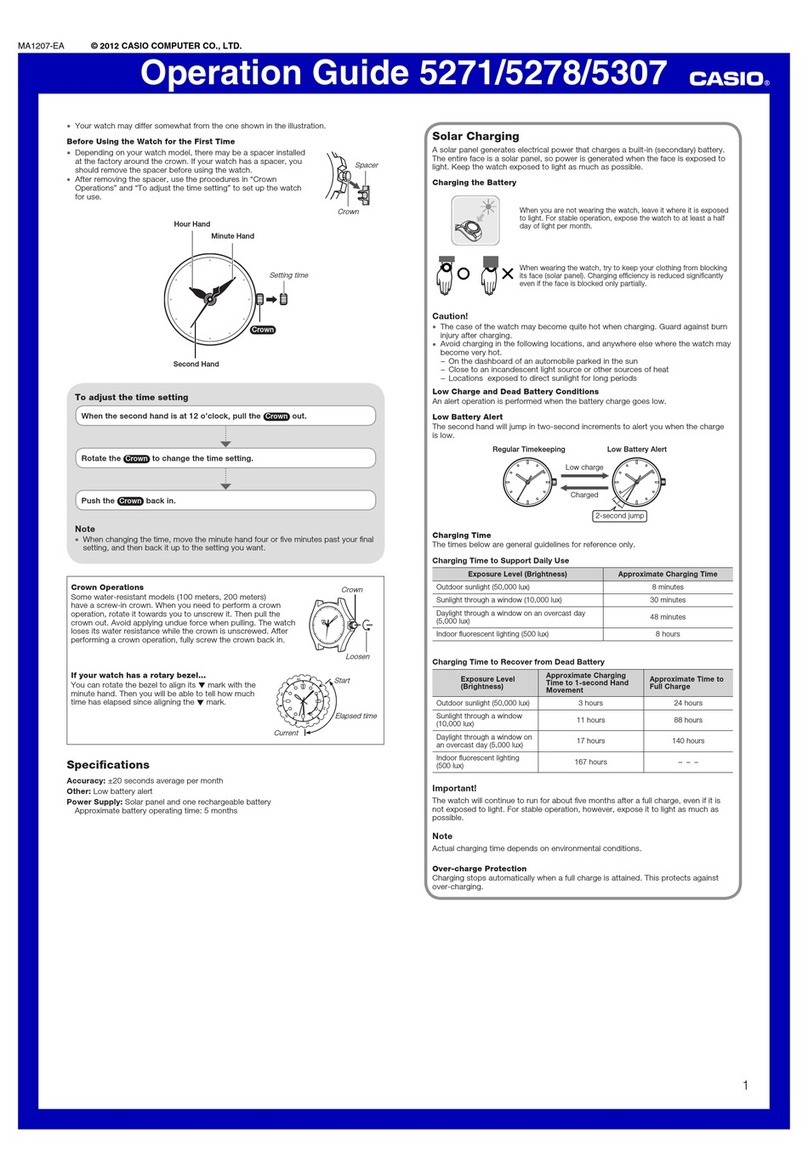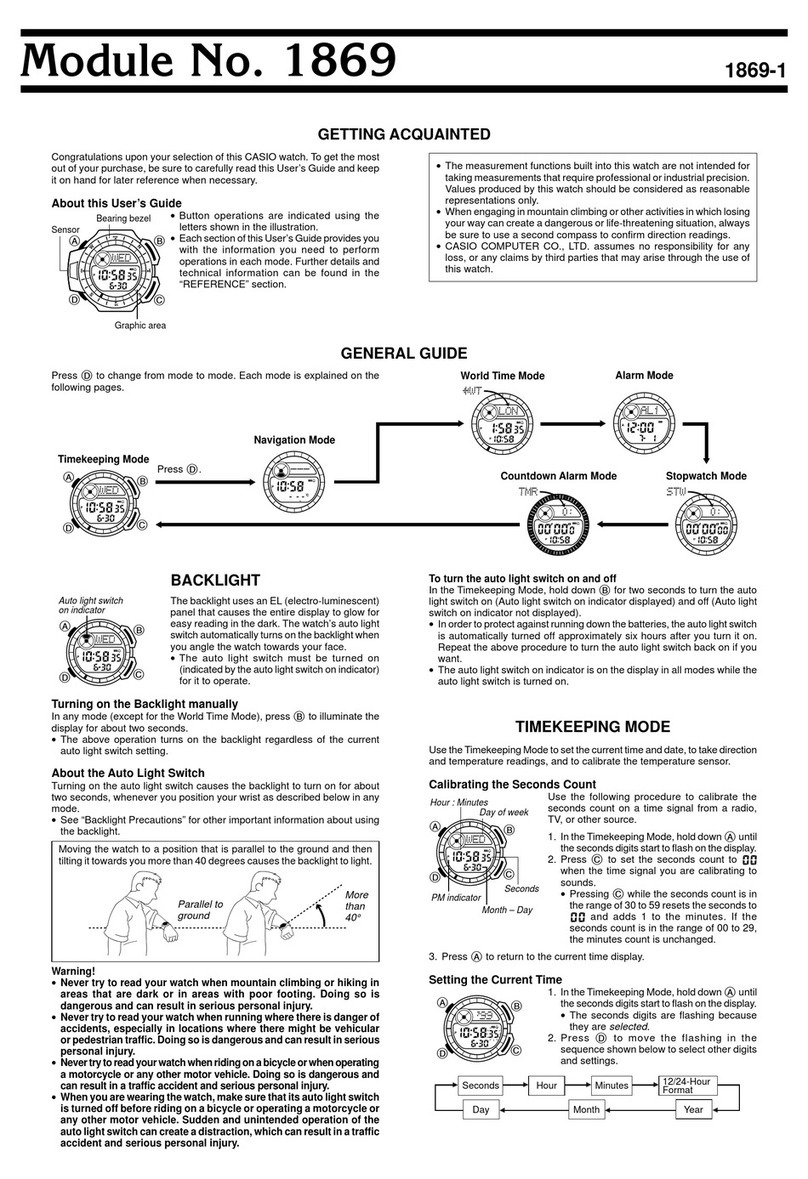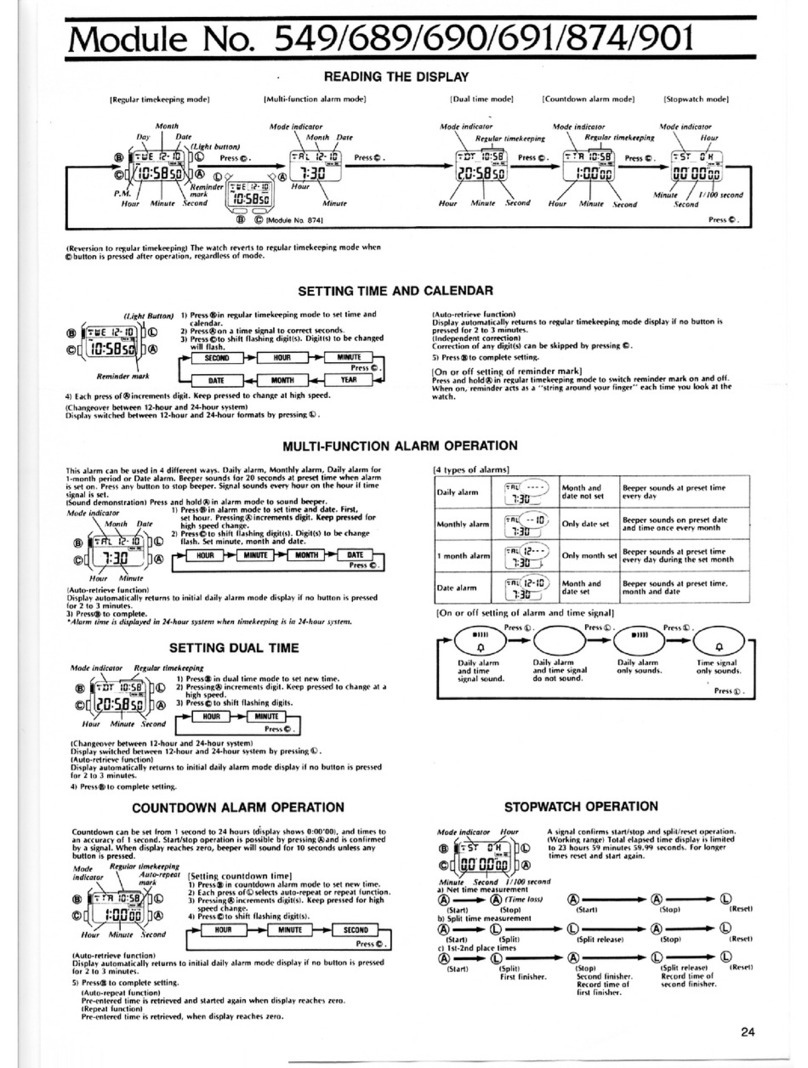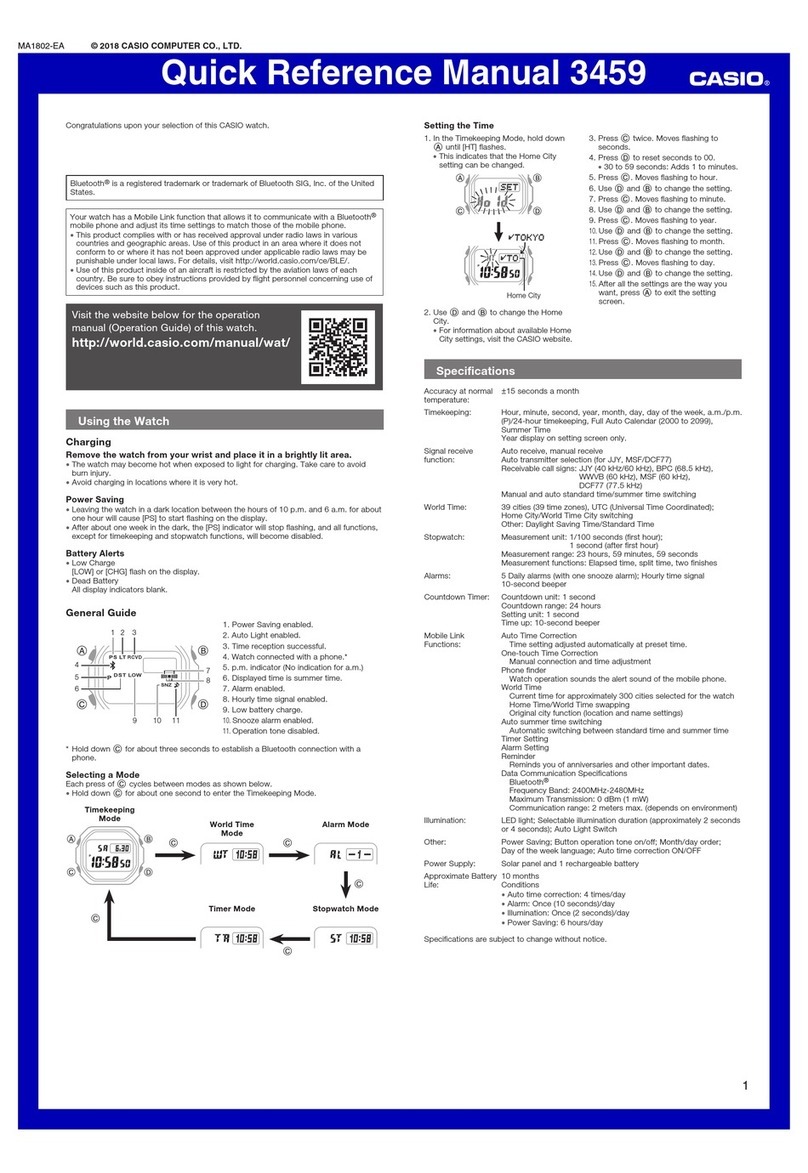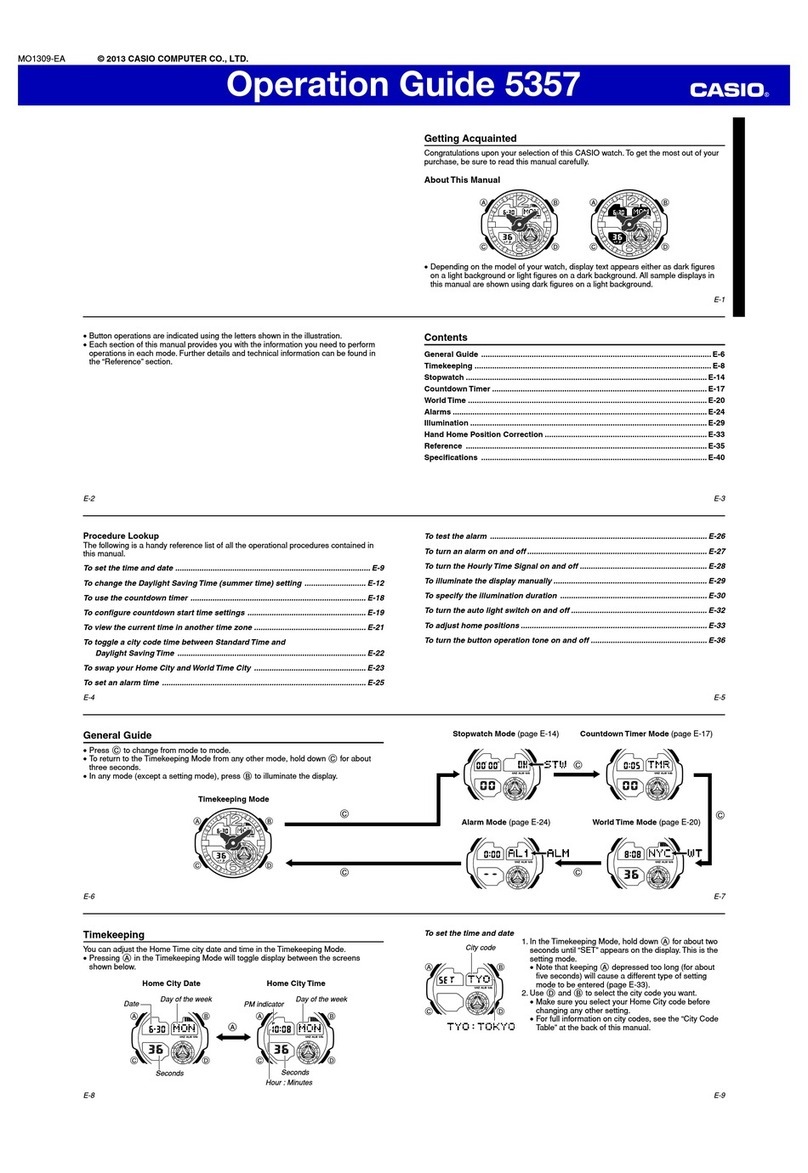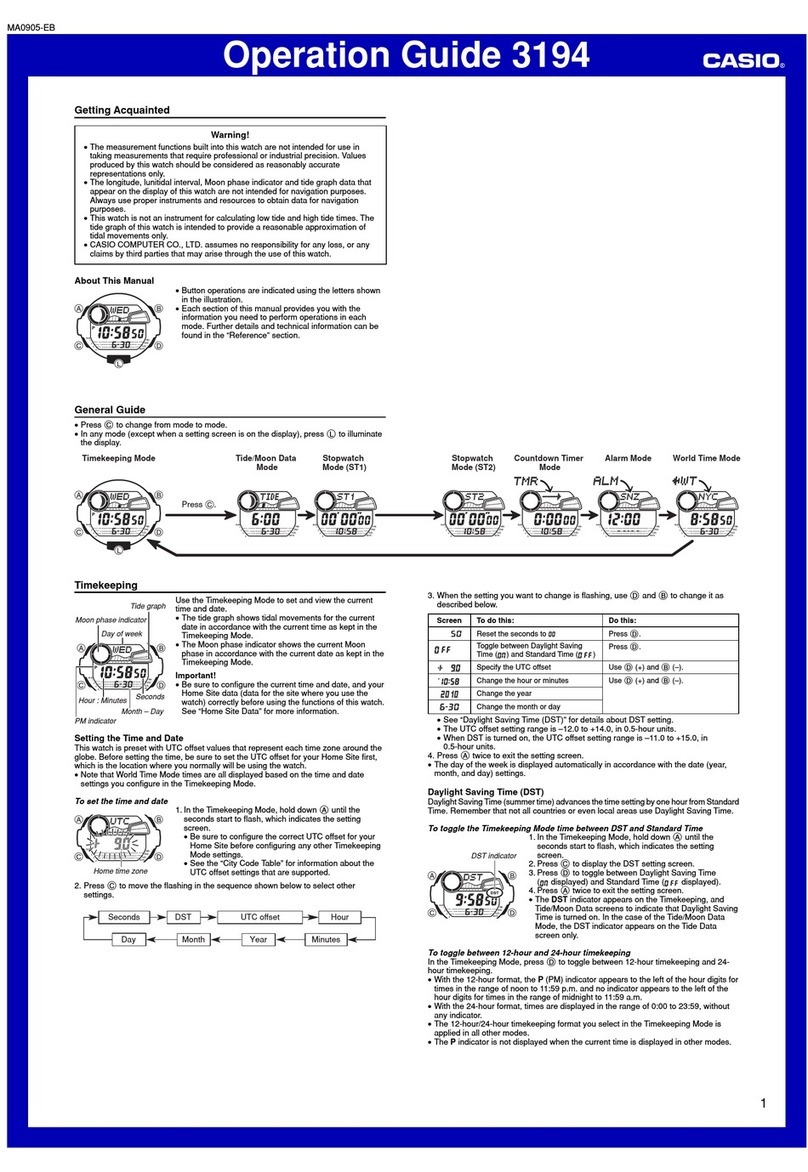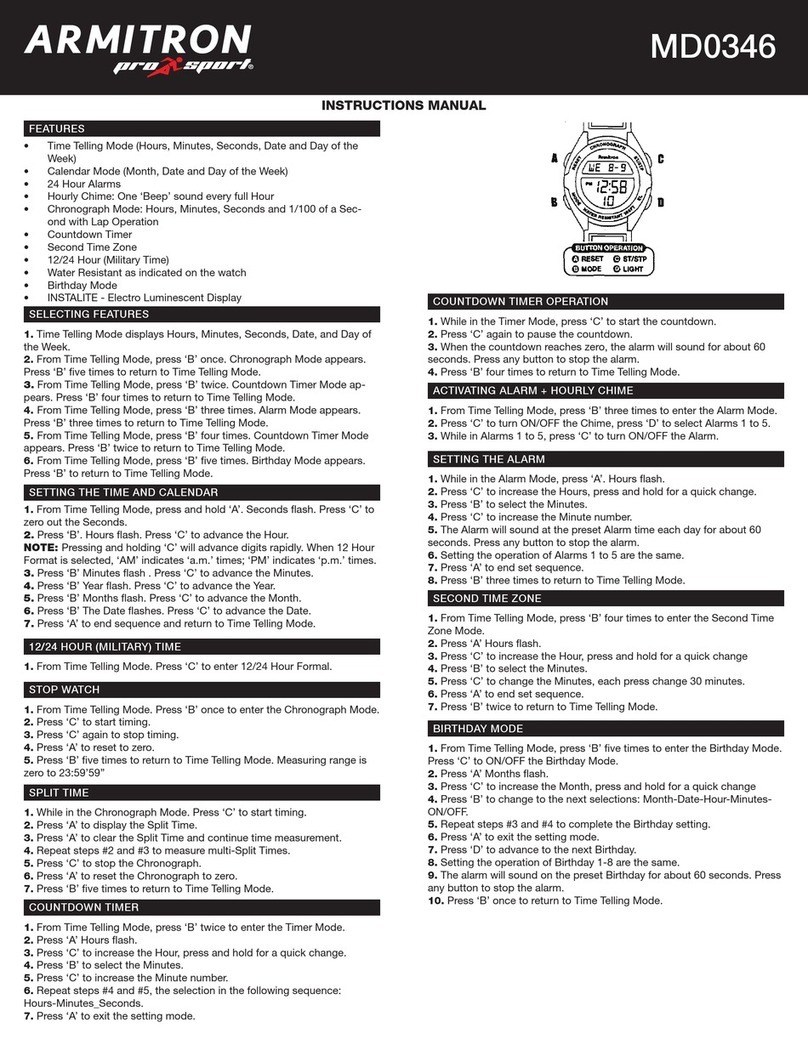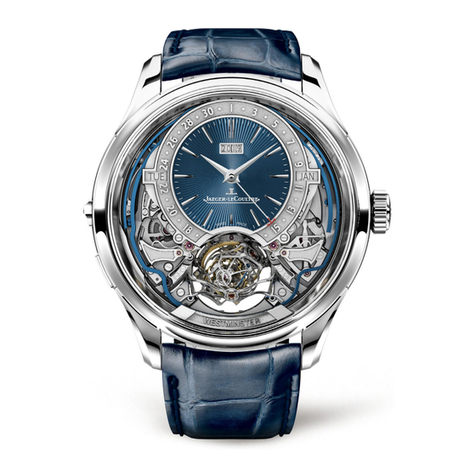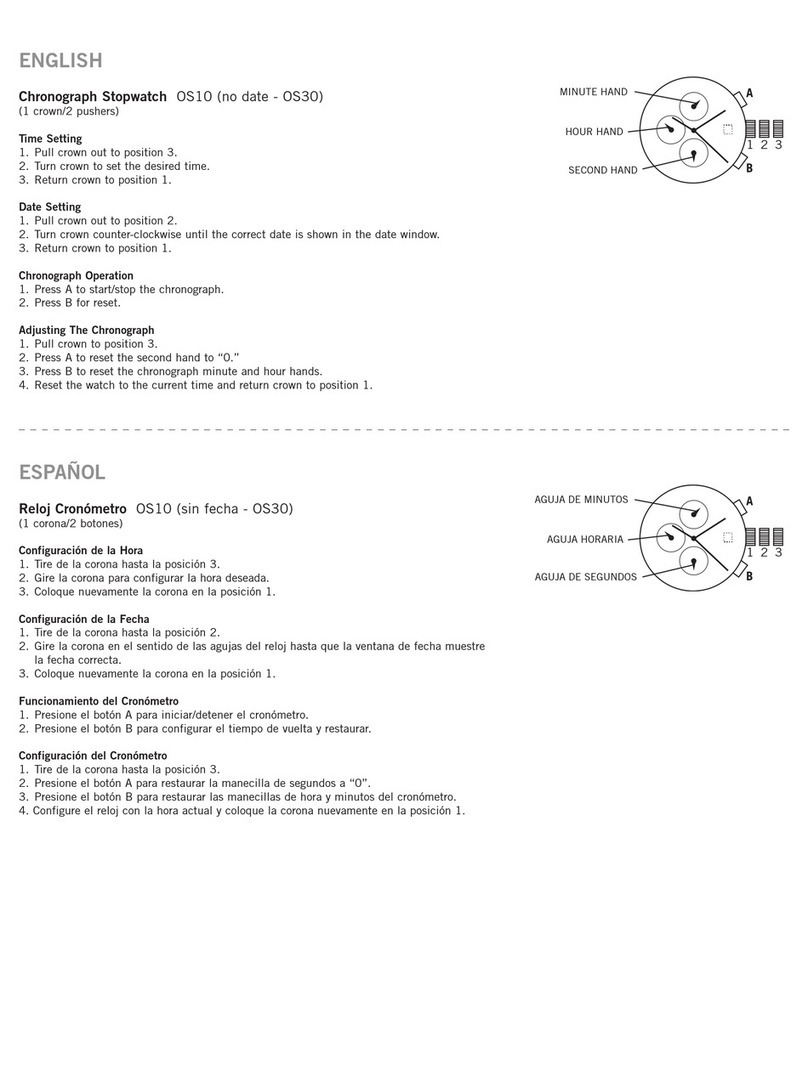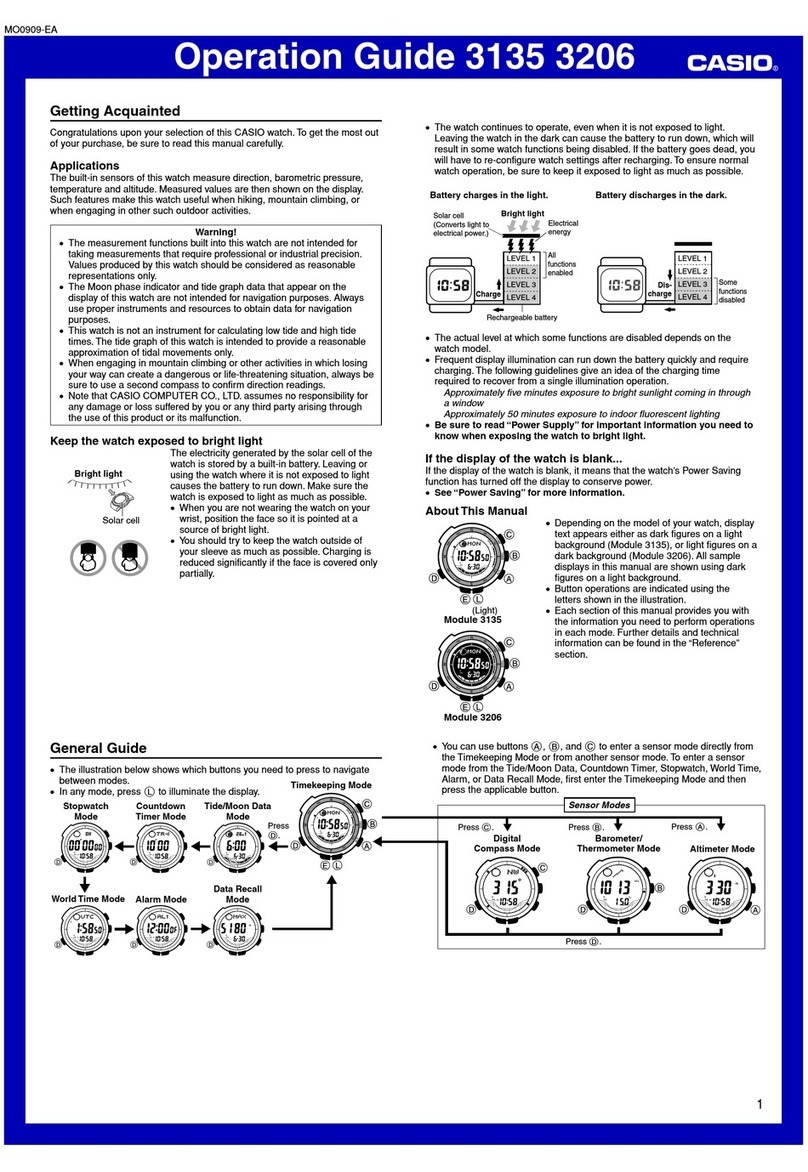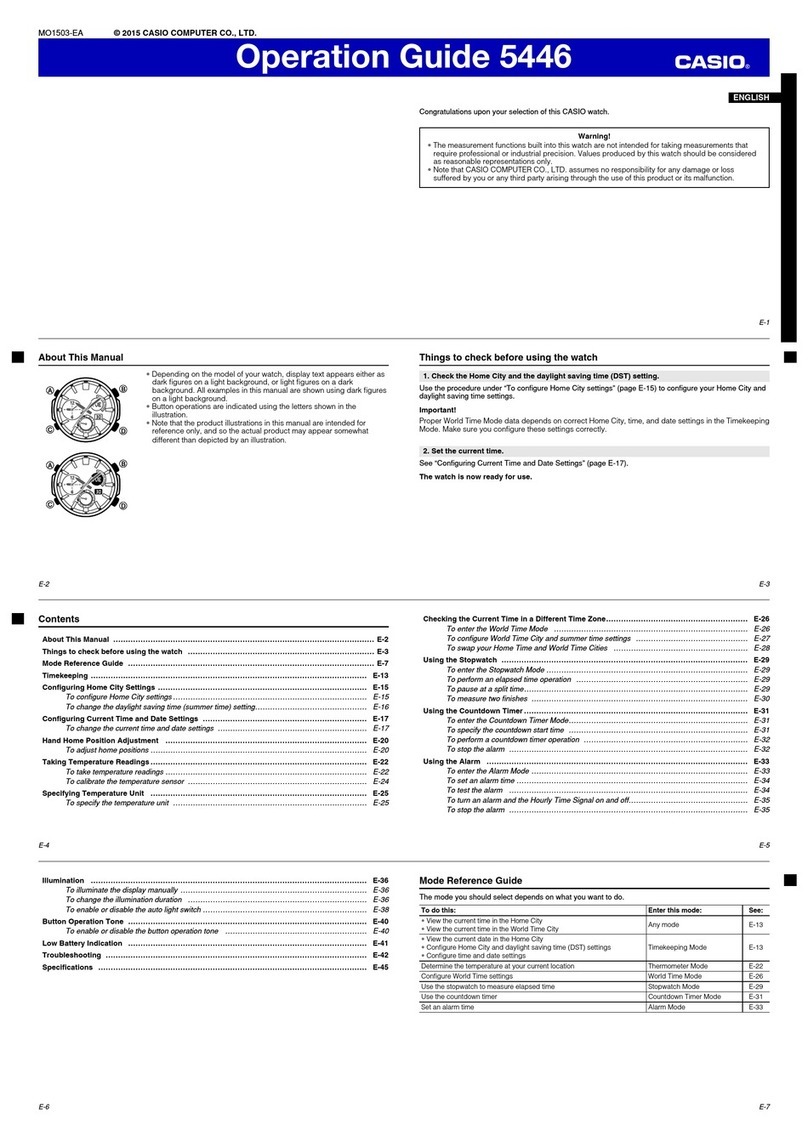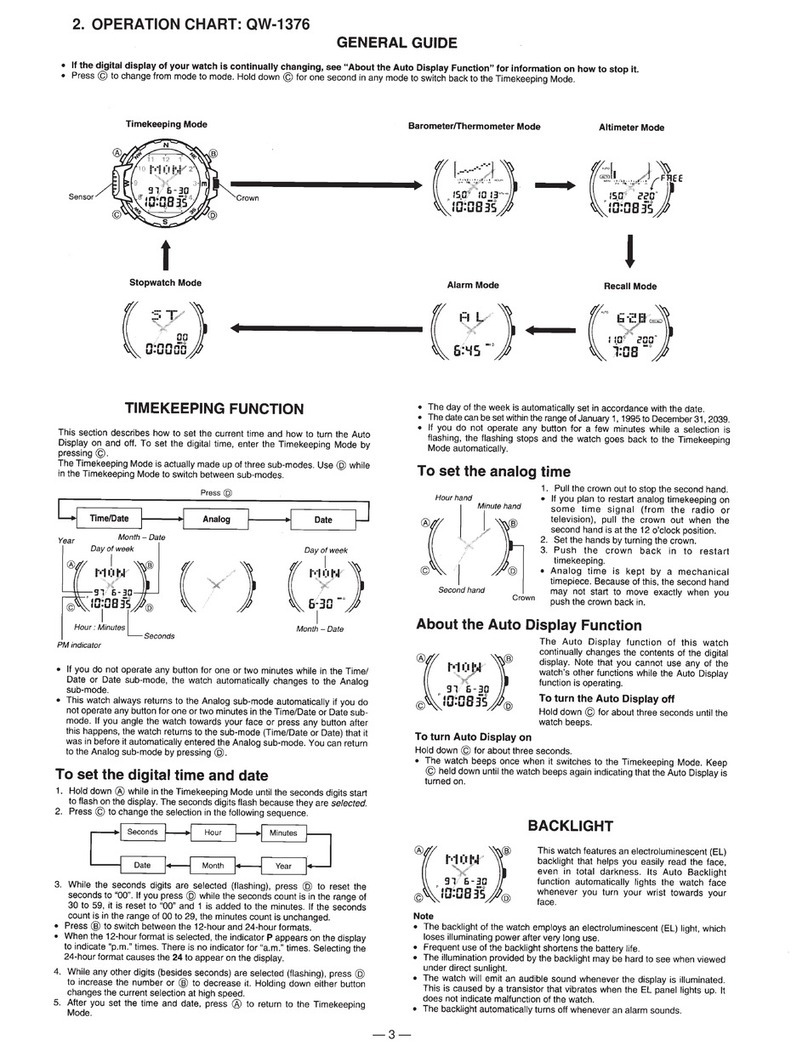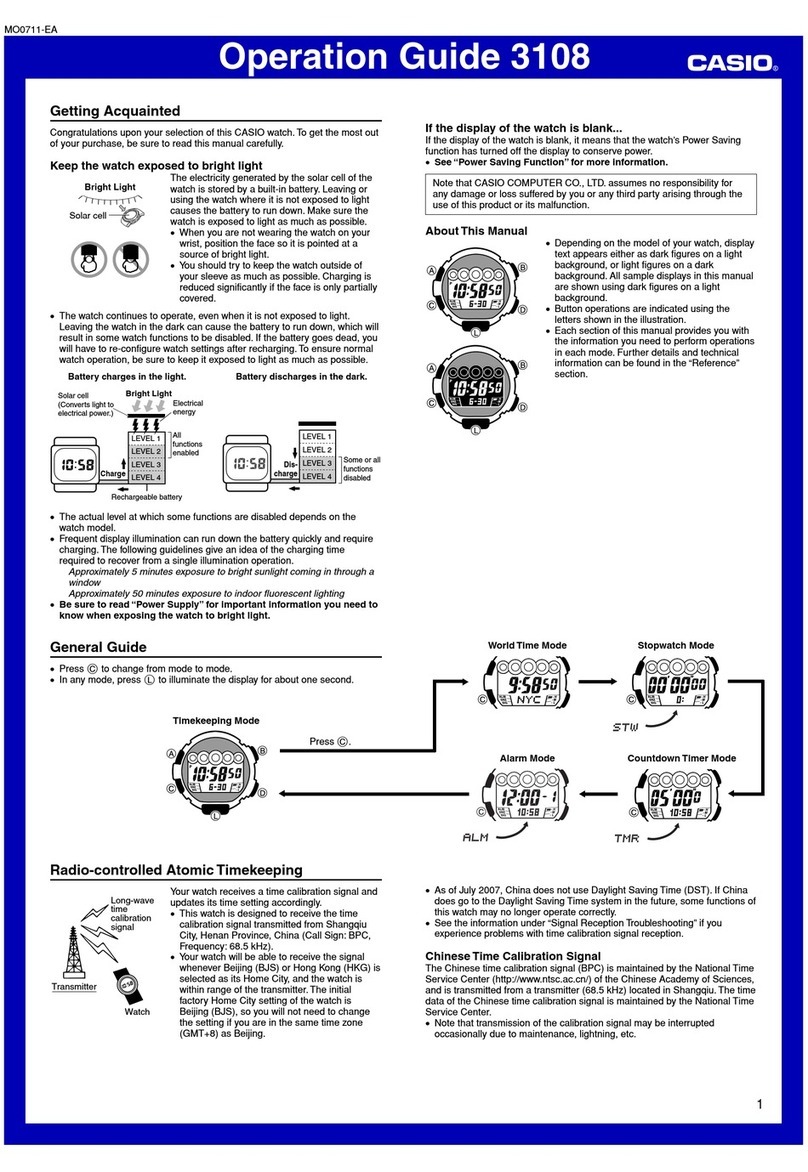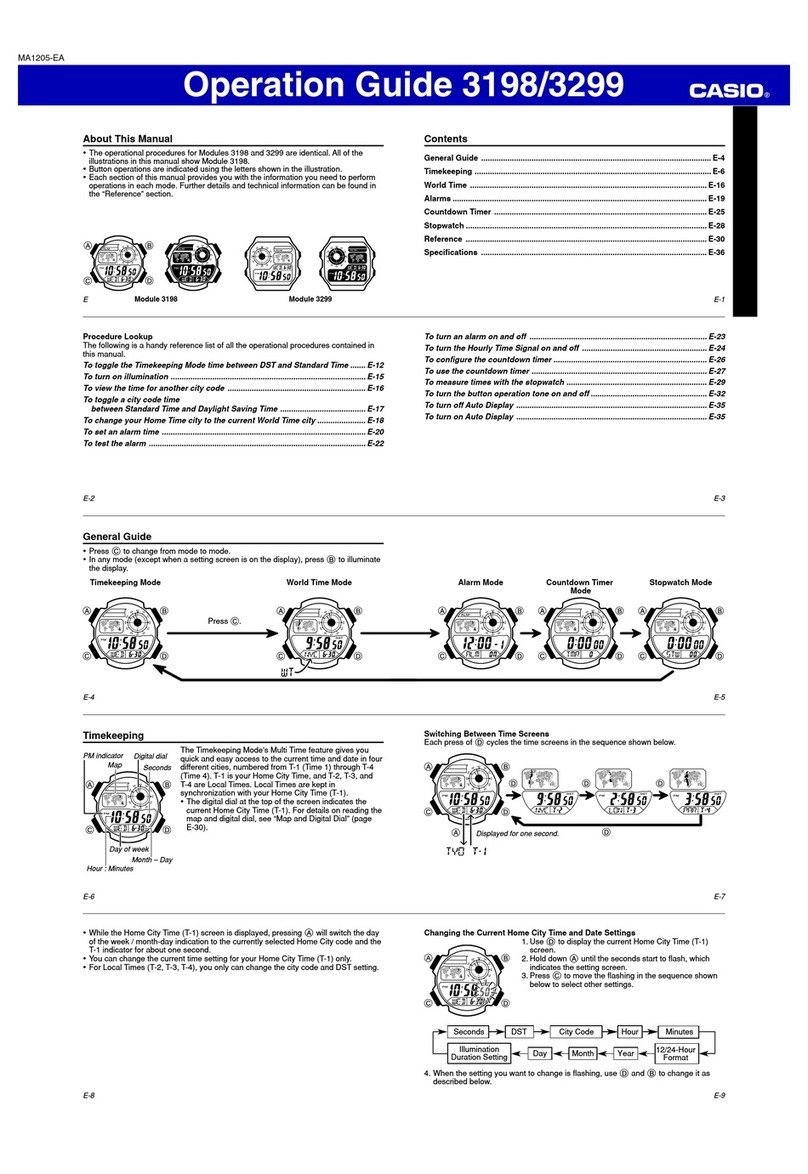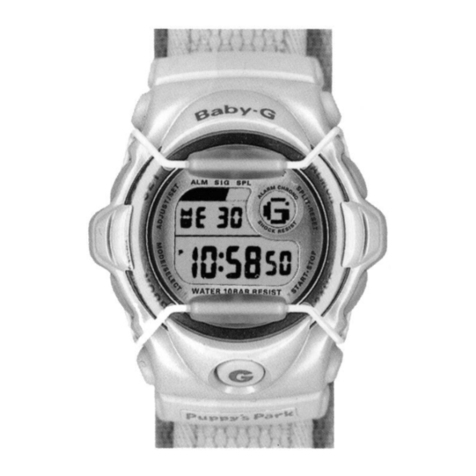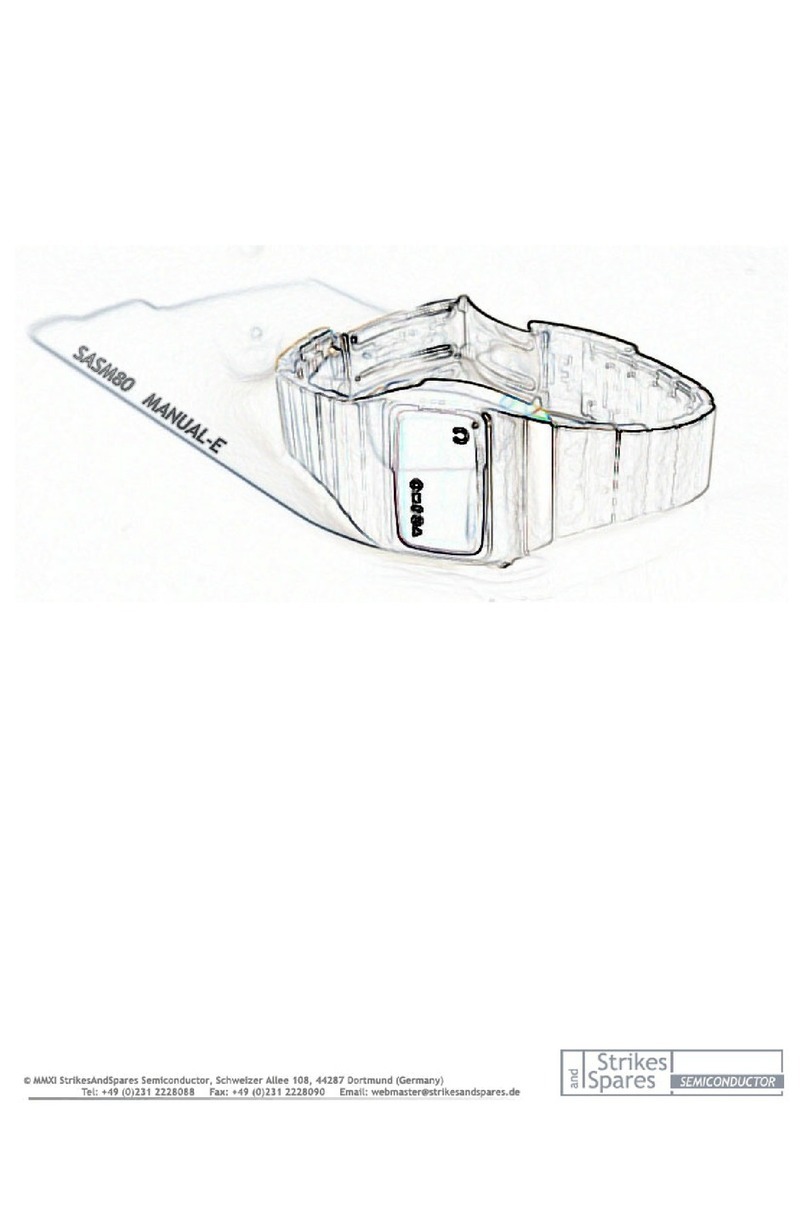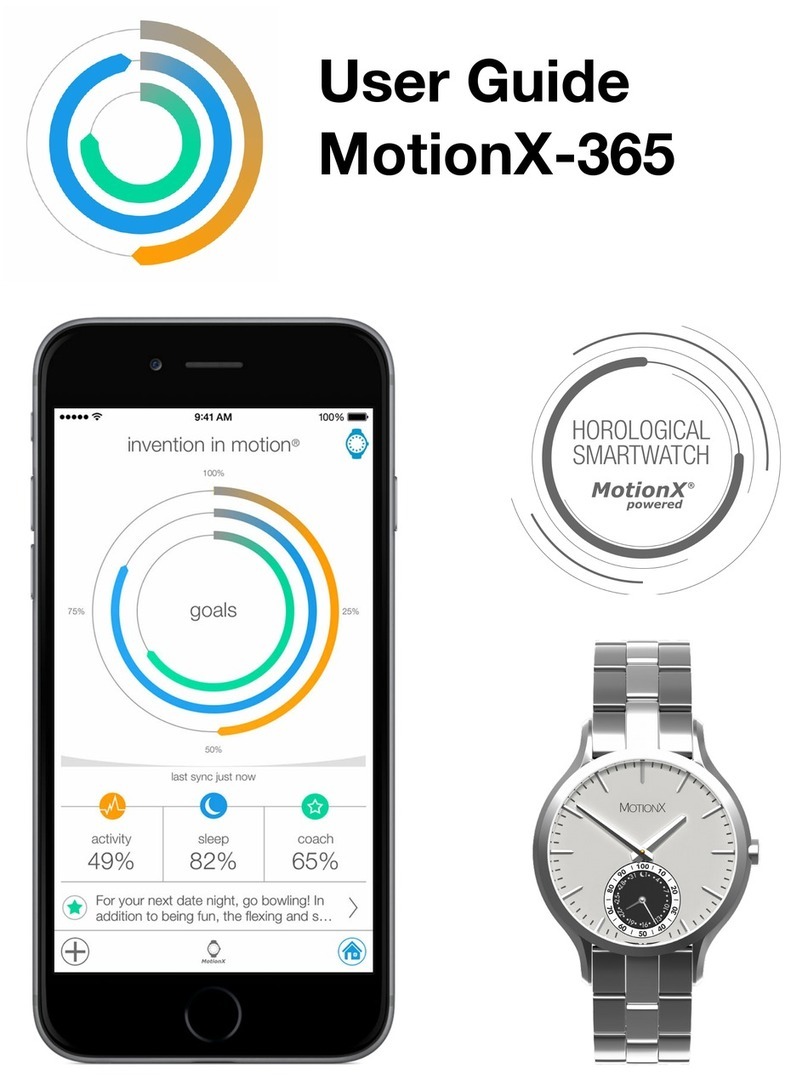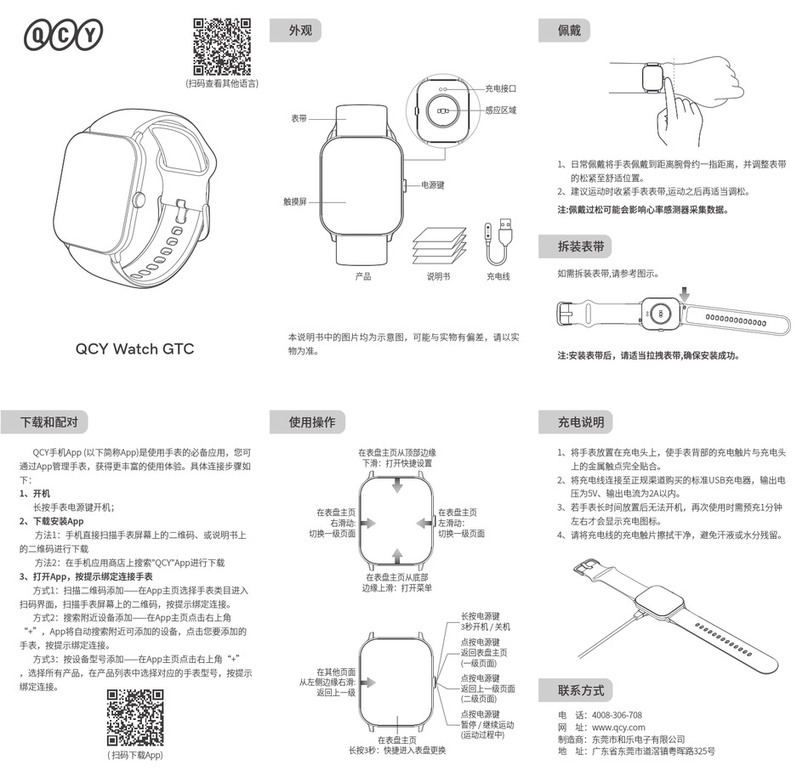
Operation Guide 5395 (OC)
L-3
City Code City
UTC Offset/
GMT Differential
Summer Time Period
Summer Time Start Summer Time End
DUBAI (DXB) Dubai +4
None None
KABUL (KBL) Kabul +4.5
KARACHI (KHI) Karachi +5
DELHI (DEL) Delhi +5.5
DHAKA (DAC) Dhaka +6
YANGON (RGN) Yangon +6.5
BANGKOK (BKK) Bangkok +7
HONG KONG
(HKG) Hong Kong +8
TOKYO (TYO) Tokyo +9
ADELAIDE (ADL) Adelaide +9.5 02:00, first Sunday in
October 03:00, first Sunday in April
SYDNEY (SYD) Sydney +10
NOUMEA (NOU) Noumea +11 None None
WELLINGTON
(WLG) Wellington +12 02:00, last Sunday in
September 03:00, first Sunday in April
xBased on data as of June 2013.
xThe rules governing global times (UTC offset and GMT differential) and summer time are determined
by each individual country.
xThe summer time periods in this table are applicable to specific cities. For cities not included in the
list, select the list city that is in the same time zone as the desired city and perform STD/DST settings
manually.
L-2
City Code Table
City Code City
UTC Offset/
GMT Differential
Summer Time Period
Summer Time Start Summer Time End
PAGO PAGO (PPG) Pago Pago –11 None None
HONOLULU (HNL) Honolulu –10
ANCHORAGE
(ANC) Anchorage –9
02:00, second Sunday
in March
02:00, first Sunday in
November
LOS ANGELES
(LAX) Los Angeles –8
DENVER (DEN) Denver –7
CHICAGO (CHI) Chicago –6
NEW YORK (NYC) New York –5
SANTIAGO (SCL) Santiago –4 24:00, second Saturday in
October
24:00, second Saturday
in March
RIO Rio De Janeiro –3 0:00, third Sunday in
October
0:00, third Sunday in
February or 0:00, fourth
Sunday in February
F. DE NORONHA
(FEN)
Fernando de Noronha
–2
None NonePRAIA (RAI) Praia –1
UTC
0
LONDON (LON) London 01:00, last Sunday in
March
02:00, last Sunday in
October
PARIS (PAR) Paris +1 02:00, last Sunday in
March
03:00, last Sunday in
October
ATHENS (ATH) Athens +2 03:00, last Sunday in
March
04:00, last Sunday in
October
JEDDAH (JED) Jeddah +3 None None
TEHRAN (THR) Tehran +3.5 0:00, March 22 or
0:00, March 21
0:00, September 22 or
0:00, September 21
L-1
City Code Table
E-36
Specifications
Accuracy at normal temperature: ± 15 seconds a month (with no signal calibration)
Timekeeping (World time): Hour, minutes (hand moves every 10 seconds), seconds, 24-hour, day, day
of the week
Calendar system: Full Auto-calendar pre-programmed from the year 2000 to 2099
Other: Home City code (can be assigned one of 29 city codes and Coordinated Universal Time);
Daylight Saving Time (summer time) / Standard Time
Time Calibration Signal Reception: Auto receive up to six times a day (5 times a day for the Chinese
calibration signal; Remaining auto receives cancelled as soon as one is successful);
Manual receive
Receivable Time Calibration Signals:
Mainflingen, Germany (Call Sign: DCF77, Frequency: 77.5 kHz); Anthorn, England (Call
Sign: MSF, Frequency: 60.0 kHz); Fukushima, Japan (Call Sign: JJY, Frequency: 40.0
kHz); Fukuoka/Saga, Japan (Call Sign: JJY, Frequency: 60.0 kHz); Fort Collins, Colorado,
the United States (Call Sign: WWVB, Frequency: 60.0 kHz); Shangqiu City, Henan
Province, China (Call Sign: BPC, Frequency: 68.5 kHz)
Stopwatch: Measuring capacity: 1:59'59.9"
Measuring unit: 0.1 seconds
Measuring mode: Elapsed time
Other: Power Saving; Low battery alert; Auto Correction of Hand Home Positions
Power Supply: Solar panel and one rechargeable battery
Approximate battery operating time: 7 months (from full charge to Level 3)
under the following conditions:
xAnalog hands operational 18 hours per day, sleep state 6 hours per day
x4 minutes of signal reception per day
E-35
■The current time setting is off by one hour.
Possible Cause Remedy Page
The period when summer time is applied in the
location where you are using the watch may be
different from the period set for your currently
selected Home City.
Use the procedure under “To switch between
standard time and summer time manually” to switch
from AUTO to STD (for standard time) or DST (for
summer time).
E-22
■Auto Receive is not performed or I cannot perform Manual Receive.
Possible Cause Remedy Page
The watch is in the Stopwatch Mode.
Auto Receive is not performed while the watch is
in the Stopwatch Mode. Hold down Bat least two
seconds to enter the Timekeeping Mode.
E-18
Your Home City setting is wrong. Check your Home City setting and correct it, if
necessary.
E-11
E-20
There is not enough power for signal reception. Expose the watch to light to charge it. E-7
■Signal reception is being performed successfully, but the time and/or day is wrong.
Possible Cause Remedy Page
Your Home City setting is wrong. Check your Home City setting and correct it, if
necessary.
E-11
E-20
The watch may have been exposed to magnetism
or strong impact, which has caused problems with
proper hand and day alignment.
Adjust the watch’s hand and day home positions. E-29
E-34
Time Calibration Signal
The information in this section applies only when LONDON (LON), PARIS (PAR), ATHENS (ATH),
HONOLULU (HNL), ANCHORAGE (ANC), LOS ANGELES (LAX), DENVER (DEN), CHICAGO (CHI),
NEW YORK (NYC), HONG KONG (HKG), or TOKYO (TYO) is selected as the Home City. You need to
adjust the current time manually when any other city is selected as the Home City.
■The
Second Hand indicates N (NO) when I check the result of the latest receive operation.
Possible Cause Remedy Page
xYou are wearing or moving the watch, or
performing a button operation during the signal
receive operation.
xThe watch is in an area with poor reception
conditions.
Keep the watch in an area where reception
conditions are good while the signal receive
operation is being performed.
E-13
You are in an area where signal reception is not
possible for some reason. See “Approximate Reception Ranges”. E-12
The calibration signal is not being transmitted for
some reason.
xCheck the website of the organization that
maintains the time calibration signal in your area
for information about its down times.
xTry again later.
—
■The current time setting changes after I set it manually.
You may have the watch configured for Auto Receive of the time calibration signal (page E-14), which will
cause the time to be adjusted automatically according to your currently selected Home City. If this results
in the wrong time setting, check your Home City setting and correct it, if necessary (page E-20).
E-33
■The current time setting is off by hours.
xYour Home City setting may be wrong. Check your Home City setting and correct it, if necessary (page
E-20).
■The current time setting is off by one hour.
xIf you are using the watch in an area where time calibration signal reception is possible, see “To
configure Home City settings” (page E-20).
xThe period when summer time is applied in the location where you are using the watch may be
different from the period set for your currently selected Home City. Use the procedure under “To switch
between standard time and summer time manually” (page E-22) to switch from AUTO to STD (for standard
time) or DST (for summer time).
■The hands and/or day indications are off.
This could indicate that the watch has been exposed to magnetism or strong impact, which has caused
problems with proper hand and day alignment. Adjust the watch’s hand and day home position alignment
(page E-29).
Charging
■The watch does not resume operation after I expose it to light.
This can happen after the power level drops to Level 3 (page E-8). Continue exposing the watch to light until
the
Second Hand starts moving normally (at one-second intervals).
■The
Second Hand starts to move at one-second intervals, but then suddenly returns to moving
at two-second intervals.
The watch probably is not sufficiently charged yet. Continue keeping it exposed to light.
E-32
Troubleshooting
Hand Movement and Position
■I lost track of what mode the watch is in.
Refer to “Mode Reference Guide” (page E-18). To return directly to the Timekeeping Mode, hold down Bat
least two seconds.
■The
Second Hand is moving at two-second intervals.
■All the watch’s hands are stopped at 12 o’clock and none of the buttons work.
Power may be low. Expose the watch to light until the
Second Hand starts moving normally, at one-
second intervals (page E-8).
■The hands of the watch suddenly start moving at high speed, even when I do not perform any
operation.
This could be due to any one of the following causes. In all cases, the hand movement does not indicate
malfunction, and should stop shortly.
xThe watch is recovering from a sleep state (page E-10).
xThe time setting is being adjusted following a successful auto time calibration signal receive operation
(page E-11).
■Hands suddenly stop moving. Button operation also is disabled.
The watch may be in the power recovery mode (page E-9). Do not perform any operation until the hands
return to their normal positions (in about 15 minutes). The hands should return to their correct positions
when normal operation returns. To help power recover, leave the watch in a location where it is exposed
to light.
